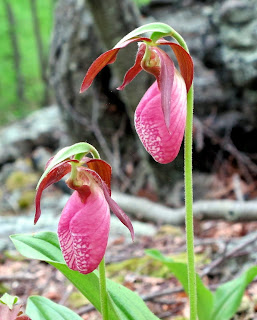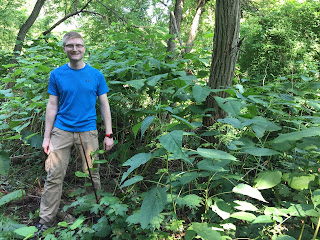by Richard B. Primack
“Don't be afraid that your life will end, be afraid that it will never begin!”
-Henry David Thoreau
We have received a new NSF-funded project to determine if trees in
the eastern United States, like oaks and maples, respond more rapidly to a
warming climate than spring woodland wildflowers, like trout lilies and
anemones. If so, the wildflowers might be getting shaded out in spring,
reducing their ability to mature their fruits in summer and to grow and flower
in later years. This is an example of an ecological mismatch between different
species, in this case trees and wildflowers, and could lead to the decline of woodland
wildflowers.
Trees such as this big-toothed aspen are leafing out earlier in the spring.
This work builds on the observations of famous environmental
philosopher Henry David Thoreau from the 1850s in Concord, MA, combined
with our own observations from 2004 to the present, which show that trees leaf
out earlier now than in the past and wildflowers are flowering earlier.
Wildflowers, such as this pink lady’s slipper orchid, might be shaded out by trees in coming years.
We are using herbarium specimens, which are plant museum
specimens, to extend our study across the entire eastern United States.
Much of this work is being carried out by BU grad student Tara Miller with help
from others.
Colleagues in China and Germany will carry out comparable studies,
allowing us to determine if this mismatch between trees and wildflowers is
really a global phenomenon.
Mason Heberling at one of the Pittsburgh field sites.
Our co-PIs on this grant, Mason Heberling at the Carnegie Museum
and Sara Kuebbing at the University of Pittsburgh, will carry out complementary
experiments to determine the combinations of temperature and photoperiod that
trees and wildflowers use to start their spring activity. They will also
measure photosynthetic rates of wildflowers to determine how they respond to
reduced light levels.
This work was recently covered by the Daily Free Press.
This work was recently covered by the Daily Free Press.



No comments:
Post a Comment